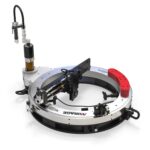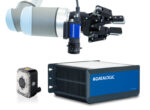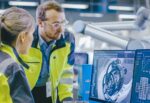ABB powers with manufacturing management technology
The Manufacturing Operations Management (MOM) software suite powers production for increased productivity and profitability, enabling seamless plant orchestration. The new version will offer an extended range of capabilities and new digital applications. This flexible and secure software platform with a broad suite of industrial applications gives operators, supervisors and plant managers the visibility and insights to take the right actions for increased productivity, quality and compliance. Features in the enhanced manufacturing operations management platform include: Enhanced user experience based on new HTML 5 web client; A new smart interactive dashboard application that provides greater visibility and collaboration; A new statistical process control (SPC) application, to determine if each process is in a state of control; A new Batch Compare application – for advanced batch analysis Manufacturing Operations Management is a comprehensive, scalable and modular software suite that optimises visibility, knowledge and control throughout the operations domain. This release provides a range of rich new functionality and a new enhanced user experience that enables operations to become more productive and responsive.” Manufacturing Operations Management is designed to simplify production management by enabling performance monitoring, downtime management and maintenance support, as well as providing statistical production analysis tools. It provides solutions and tools to facilitate the collection, consolidation and distribution of production, quality and energy information via the plant’s web-based reports, trends, and graphs. A new, self-service dashboard application promotes increased collaboration, providing visibility from shop floor to top floor and spanning IT and OT environments. It increases data connectivity to all apps and modules within the MOM suite, combining historic and manufacturing data and providing the user with improved customization capabilities. Dashboards can be shared amongst users, further promoting collaboration between teams. Trends and events are displayed together, which enables customers to identify issues and opportunities enabling informed and timely decisions. The new common services platform […]










